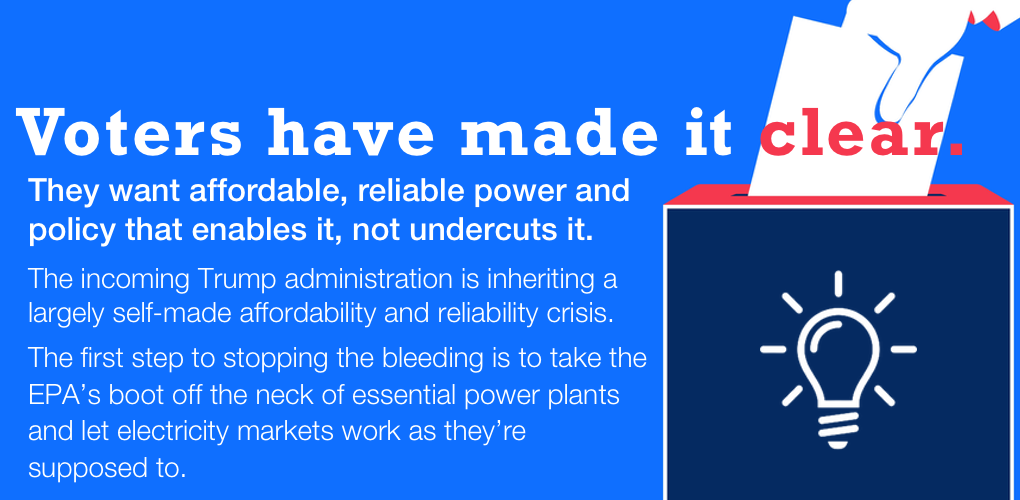
Electricity Inflation at the Ballot Box
Donald Trump’s decisive win in the presidential election appears to have been fueled by broad discontent with the economy and notably inflation.
ABC News preliminary exit poll results found that more than two-thirds of voters said the economy is in bad shape and the share of people who said they are worse off under the Biden administration (45%) was the highest ever in presidential exit polls that have asked the question—even surpassing the 42% “worse off” in 2008 during the Great Recession.
CBS found much the same thing in its exit polling. Two-thirds of voters said they were worse off financially compared to four years ago, with eight in 10 of those voters backing Trump. Most voters said inflation was a hardship, including nearly a quarter who said the hardship was severe.
Inflation is an election loser. And the role that electricity price inflation is playing in voter discontent shouldn’t be overlooked.
Polling Reflects an Electricity Affordability Crisis
According to CBS News’ price tracker, the cost of electricity has increased 28.5% since 2019. For many Americans, the rise in electricity prices has been even steeper than that average. In California, for example, rates have jumped 82% in the past decade.
Analysis from the U.S. Energy Information Administration found that over a third of American households are experiencing energy insecurity, unable to afford their basic energy needs.
Americans are understandably concerned and frustrated. In national polling conducted for the National Mining Association in August, 72% of Americans expressed concern about the impact of U.S. Environmental Protection Agency (EPA) regulations on the reliability and affordability of electricity in the U.S. as they faced rising costs. And more significantly, 72% said the next president should keep existing natural gas and coal plants that are currently providing electricity to the electric grid online until new capacity is built to replace them.
Trump’s Opportunity
That is precisely the opportunity the incoming Trump administration now has. Scrapping EPA’s unworkable and unlawful power plant agenda, with its suite of rules designed to force plant closures despite rising prices and supply shortfalls, should be at the very top of the Trump energy agenda.
There is urgency to ensure the coal fleet can remain an essential bridge to the future. With soaring power demand now here, driven by electrification of the economy and the explosive growth of data centers, utilities and grid operators are scrambling to find reliable generation.
According to recent analysis, utilities are now facing potentially overwhelming demand that could force a 10% rise in electricity rates per year. The same analysis found some U.S. utilities may need to increase their annual generation by more than a quarter over just the next three years in order to meet rising electricity demand, a growth rate far above anything utilities achieved between 2005 and 2023.
How important is the coal fleet to meeting that demand? Recall that in the PJM electricity market, the nation’s largest serving 65 million Americans, where data center growth is particularly pronounced, capacity prices jumped 800% this summer. Notably all the coal capacity offered in the capacity auction cleared – nearly 24 gigawatts – sending an unmistakable signal that the very coal capacity that EPA has targeted for elimination remains essential in regions already getting clear market signals of impending shortages.
Utilities – at the urging of grid operators facing supply crises – have already started pushing back coal plant retirement dates. According to S&P Global, utilities will retire just 3 GW of U.S. coal capacity in 2024, the lowest level since 2015. Provided relief from EPA’s regulatory onslaught, the slowdown of closures could be – should be – a new reality.
Voters have been clear: they want affordable, reliable power and policy that enables it, not undercuts it. The incoming Trump administration is inheriting a largely self-made affordability and reliability crisis. The first step to stopping the bleeding is to take the EPA’s boot off the neck of essential power plants and let electricity markets work as they’re supposed to.
- On November 7, 2024
